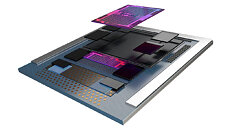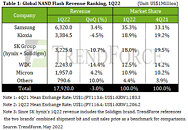Global Fab Equipment Spending Forecast to Reach All-Time High of Nearly $100 Billion in 2022
Global fab equipment spending for front-end facilities is expected to increase approximately 9% year-over-year (YOY) to a new all-time high of US$99 billion in 2022, SEMI announced today in its latest quarterly World Fab Forecast report. The report also shows the global fab equipment industry increasing capacity this year and again in 2023. "After achieving a record level in 2022, the global fab equipment market is projected to remain healthy next year driven by new fabs and upgrade activity," said Ajit Manocha, SEMI President and CEO.
Taiwan is expected to lead fab equipment spending in 2022, increasing investments 47% YOY to US$30 billion, followed by Korea at US$22.2 billion, a 5.5% decline, and China at US$22 billion, a 11.7% drop from its peak last year. Europe/Mideast this year is forecast to log record high spending of US$6.6 billion, a 141% YOY surge this year though outlays remain comparatively smaller than in other regions. Strong demand for high-performance computing (HPC) advanced technologies is driving the region's jump in spending. The Americas and Southeast Asia are also expected to register record high investments in 2023.
Taiwan is expected to lead fab equipment spending in 2022, increasing investments 47% YOY to US$30 billion, followed by Korea at US$22.2 billion, a 5.5% decline, and China at US$22 billion, a 11.7% drop from its peak last year. Europe/Mideast this year is forecast to log record high spending of US$6.6 billion, a 141% YOY surge this year though outlays remain comparatively smaller than in other regions. Strong demand for high-performance computing (HPC) advanced technologies is driving the region's jump in spending. The Americas and Southeast Asia are also expected to register record high investments in 2023.








































